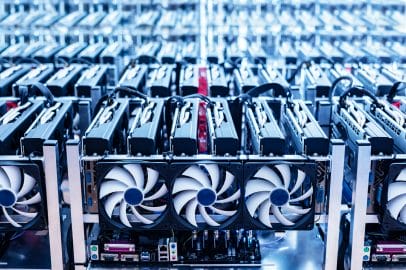 Has the crypto farming bubble finally popped? Given the recent crypto downturn, some people question the value of cryptocurrencies such as Bitcoin and Ethereum. A few go as far as to say it is a whole lot of hot air.
Has the crypto farming bubble finally popped? Given the recent crypto downturn, some people question the value of cryptocurrencies such as Bitcoin and Ethereum. A few go as far as to say it is a whole lot of hot air.
In one sense, the naysayers are correct.
Crypto farms cram massive amounts of computing density into tiny spaces, and these server banks generate a lot of hot air.
To succeed in creating a lucrative revenue source, crypto farmers must manage the heat output of their farms well.
If they don’t, their operations will be plagued by overheating, high electricity costs and low efficiency.
What makes it or breaks it for crypto farms?
Space layout is key. It must pack in as much computing muscle as possible while also facilitating the inflow of cold air and the removal of hot air.
Unfortunately, there is no single one-size-fits-all room layout to achieve this.
Traditional data center design best practices
Careful planning goes into the design and construction of traditional data center facilities.
Over the years, best practices have evolved to ensure the efficiency of data centers:
- Redundant computers and electrical systems
- Raised floors
- Hot aisles and cold aisles
- Backup generators
- Batteries
- Air handling units (AHUs)
There’s just one (big) problem: Cost. Facilities like these are expensive to equip and run.
Small scale crypto farms don’t have the same resources as large scale data centers.
Heat, the kryptonite of crypto farms
Crypto farmers don’t have the budget, the margins or the time to take the traditional route.
They typically use whatever space is available, fit in as many multi-core servers and graphics processing units (GPUs) as possible, and get to work mining cryptocurrency. Crypto farms might be located in a room in a house, in a small office space or in an unused basement. Some are housed in large warehouses where the hot air dissipates easily, and others are set up in containers.
With hundreds of servers stacked in these small spaces, most crypto farms soon face challenges. Overheating is a major problem, and it comes with a high cost: cooling the area consumes a lot of electricity. Much is wasted due to inefficiency.
It’s easy enough to pile banks of servers into a small office or container, but if the expelled air can’t escape rapidly, the equipment will eventually shut down, taking your hashrate along with it.
Simulation to optimize crypto farm design
Simulation is hands-down the best preventive solution to crypto farm overheating problems.
A simple simulation can help rapidly determine the optimum computing density for the square footage of the crypto farm space along with recommended room modifications that can help to optimize crypto mining efficiency, performance, and cost.
As every crypto farm is unique, simulation and optimization requires an individualized approach.
By simulating the specific room conditions, it becomes possible to calculate the temperature, air velocity, and interchange of hot and cold air in the facility, and to obtain a heat map of equipment hot spots that are likely to lead to a server meltdown.
Based on these results, it is possible to optimize the position of servers and achieve the best airflow and avoid hotspots.
An upfront investment in simulation is an excellent way to guard against equipment failure due to overheating and to avoid the high cost of fixing the problems caused by poor room layout.
Rising profitability, not rising temperature
Some may argue that there is no time for lengthy design, simulation and optimization efforts. The crypto mining rush is on and there is no time to lose. However, simulation is fast and has a rapid return on investment.
In this fiercely competitive field, time is of the essence. However, if you’re willing to spend time upfront on simulation, you will enhance your mining efforts, ensure your equipment runs reliably without sudden shutdowns, and increase your crypto farm’s profitability.
By simulating your crypto farm spaces, you will see where hot air may build up, how best to channel it away from hotspots, and how to import cold air from outside to cool the environment.
Noise, too, is a waste of energy. By modifying the layout of the room, noise from moving components such as fans can be reduced, contributing to improved efficiency.
With the right approach, you might even achieve these benefits without the need to purchase AHUs, coolers, large fans or other equipment.
Ask the thermal simulation experts
Maya HTT helps crypto miners and engineering firms optimize cooling efficiency and compute density.
CFD simulations validate room design during construction and can help you take advantage of free cooling and natural ventilation to eliminate some of the biggest crypto farming expenses.
Our expertise in computational fluid dynamics and simulation helps establish highly productive, efficient, and cost-effective computing spaces.
Don’t wait for overheating problems to start. Contact a Maya HTT expert today.

 Has the crypto farming bubble finally popped? Given the recent crypto downturn, some people question the value of cryptocurrencies such as Bitcoin and Ethereum. A few go as far as to say it is a whole lot of hot air.
Has the crypto farming bubble finally popped? Given the recent crypto downturn, some people question the value of cryptocurrencies such as Bitcoin and Ethereum. A few go as far as to say it is a whole lot of hot air.